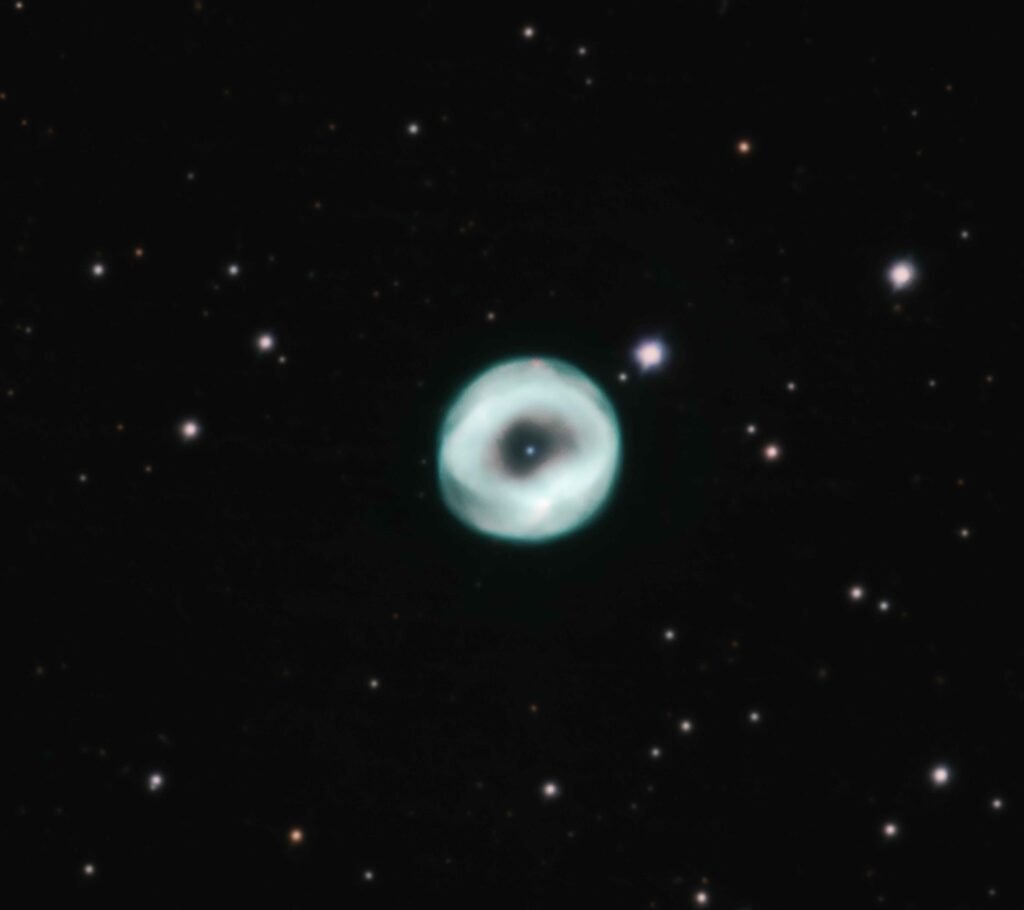I have taken the hyperstar off my C11, which gave me fast imaging at 550mm F1.9, to image smaller objects at the native 2800mm focal length. That has been a learning experience as it is much more difficult to find guide stars and guiding well is both necessary and important at the native focal length.
One of the first targets I chose is the “spare tyre” nebula (IC5148).
IC 5148, is a striking planetary nebula in the constellation Grus, discovered by Australian amateur Walter Frederick Gale in 1894. It was independently catalogued again by Lewis Swift in 1897 as IC 5150; later observations confirmed both refer to the same object.
This nebula lies about 3,000 light years from Earth (estimates range from about 3,000 to 3,800 ly). Its angular diameter is approximately 2 arcminutes, corresponding to a physical radius of roughly 1.2 light years.
IC 5148 boasts one of the highest expansion speeds known among planetary nebulae—around 50 km/s (some sources note ~53 km/s), marking it as exceptionally dynamic. At the core lies a hot white dwarf, with spectral classification hgO(H)—a hydrogen-rich, high-gravity star. Visually, the nebula presents as a near-perfectly circular ring with a central cavity, reminiscent of a “spare tyre,” hence its nickname. However, deep imaging and spectroscopy have unveiled a complex, ionized halo and faint outflows—halo features that suggest shock structures and multi-phase mass ejection history.

Leave a Reply